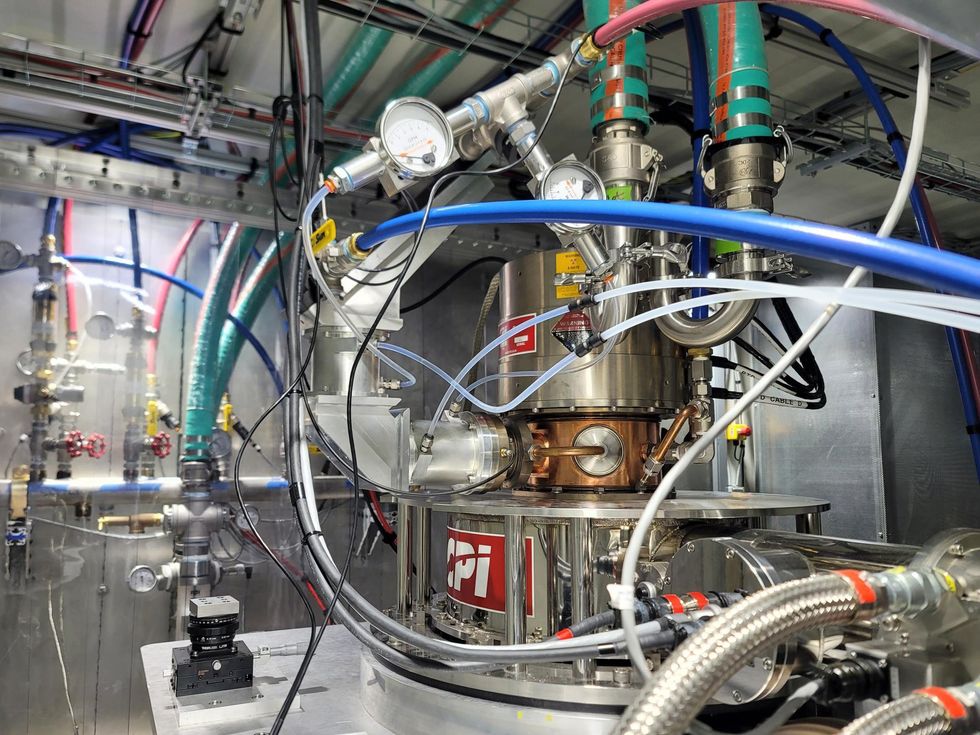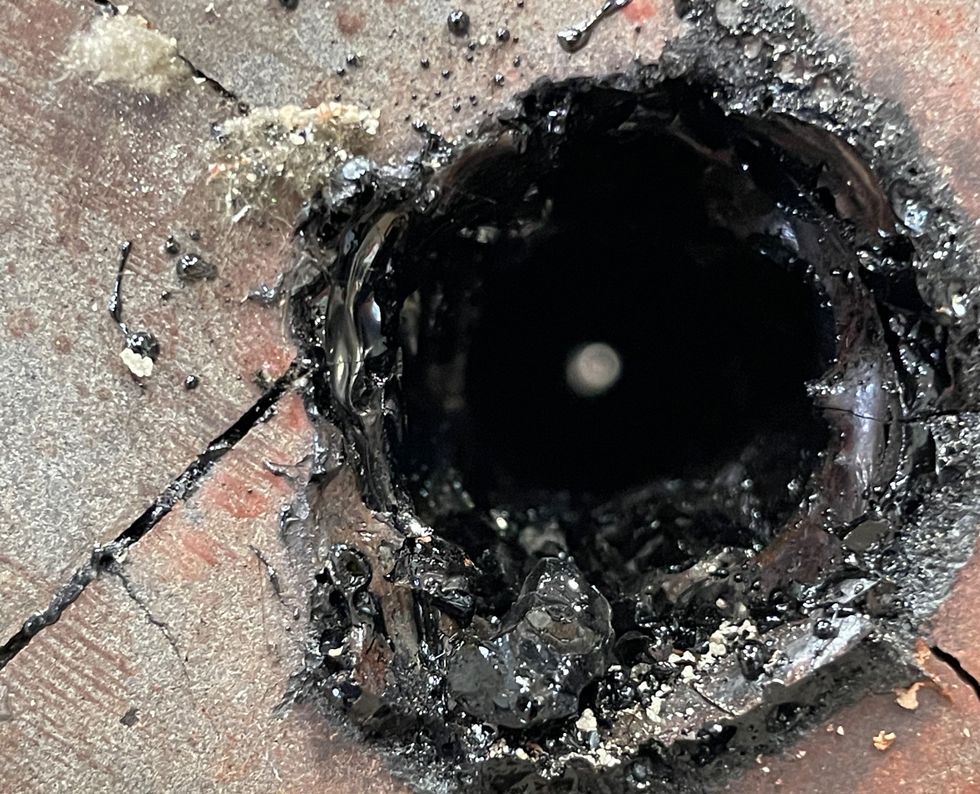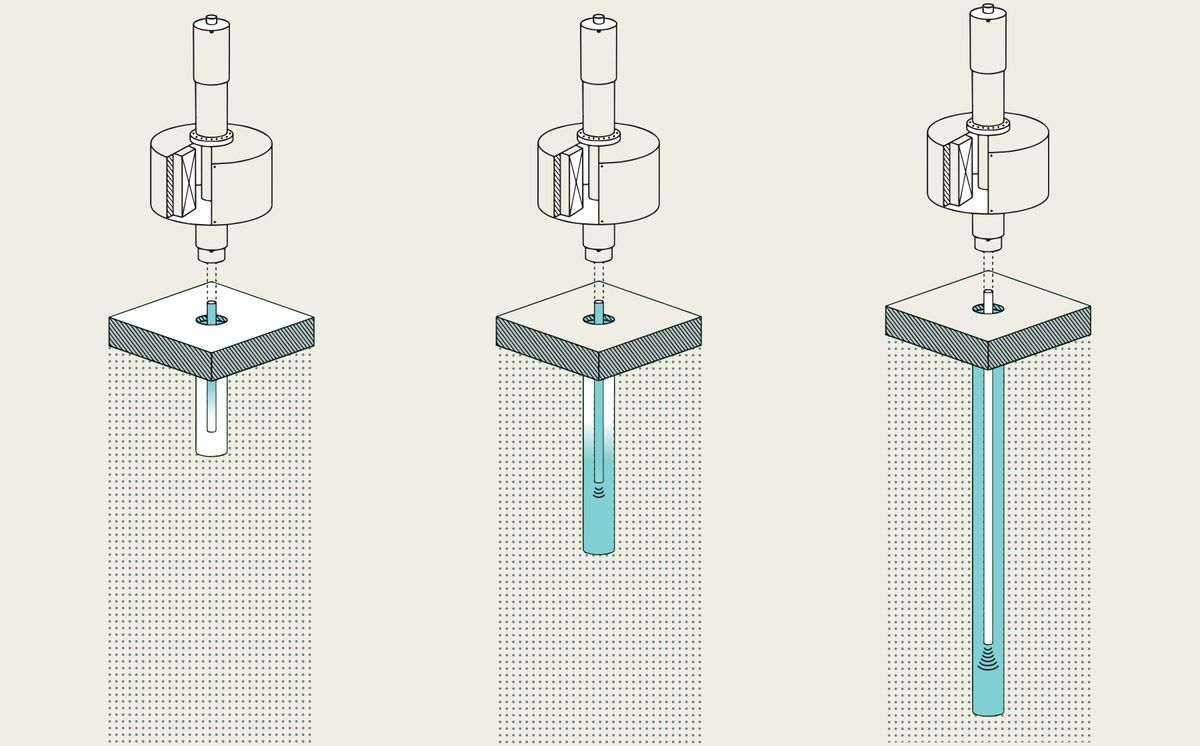The upper 10 kilometers of the Earth’s crust contains vast geothermal reserves, essentially awaiting human energy consumption to begin to tap into its unstinting power output—which itself yields no greenhouse gasses. And yet, geothermal sources currently produce only three-tenths of one percent of the world’s electricity. This promising energy source has long been limited by the extraordinary challenges of drilling holes that are deep enough to access the intense heat below the Earth’s surface.
Now, an MIT spin-off says it has found a solution in an innovative technology that could dramatically reduce the costs and timelines of drilling to fantastic depths. Quaise Energy, based in Cambridge, Mass., plans to deploy what are called gyrotron drills to vaporize rock using powerful microwaves.
“We need to go deeper and hotter to make geothermal energy viable outside of places like Iceland.” —Carlos Araque, Quaise Energy
A gyrotron uses high-power, linear-beam vacuum tubes to generate millimeter-length electromagnetic waves. Invented by Soviet scientists in the 1960s, gyrotrons are used in nuclear fusion research experiments to heat and control plasma. Quaise has raised $95 million from investors, including Japan’s Mitsubishi, to develop technology that would enable it to quickly and efficiently drill up to 20 km deep, closer to the Earth’s core than ever before.

“Supercritical geothermal power has the potential to replace fossil fuels and finally give us a pathway to an energy transition to carbon-free, baseload energy,” says Quaise CEO Carlos Araque, a veteran of the oil and gas industry and former technical director of The Engine Accelerator, MIT’s platform to commercialize world-changing technologies. “We need to go deeper and hotter to make geothermal energy viable outside of places like Iceland.”
The deepest man-made hole, which extends 12,262 meters below the surface of Siberia, took nearly 20 years to drill. As the shaft went deeper, progress declined to less than a meter per hour—a rate that finally decreased to zero as the work was abandoned in 1992. That attempt and similar projects have made it clear that conventional drills are no match for the high temperatures and pressures deep in the Earth’s crust.
Microwaves meet rocks
“But an energy beam doesn’t have those kinds of limits,” says Paul Woskov, senior research engineer at MIT’s Plasma Science and Fusion Center. Woskov spent decades working with powerful microwave beams, steering them into precise locations to heat hydrogen fuel above 100 million degrees to initiate fusion reactions.
“It wasn’t much of a jump to make the connection that if we can melt steel chambers and vaporize them, we could melt rocks.” —Paul Woskov, MIT
“I was already aware that these sources were quite damaging to materials because one of the challenges is not to melt the inner chamber of a tokamak,” a device that confines a plasma using magnetic fields. “So it wasn’t much of a jump to make the connection that if we can melt steel chambers and vaporize them, we could melt rocks.”
In 2008, Woskov began intensively studying whether the approach could be an affordable improvement on mechanical drilling. The research led to hands-on experiments in which Woskov used a small gyrotron to blast through bricks of basalt.
Based on his experiments and other research, Woskov calculated that a millimeter-wave source targeted through a roughly 20 centimeter waveguide could blast a basketball-size hole into rock at a rate of 20 meters per hour. At that rate, 25-and-a-half days of continuous drilling would create the world’s deepest hole.
“It was evident that if we could get it to work, we could drill very deep holes for a very small fraction of what it costs now,” says Wostov. Although Woskov is credited as a founder of Quaise, he says he has no financial stake in the company—unlike MIT.
A wave of possibilities
The Quaise design calls for a corrugated metal tube to serve as a waveguide, which would be extracted after drilling is completed. The system would rely on injected gas to quench and carry out ash.
“Instead of pumping fluid and turning a drill, we’ll be burning and vaporizing rock and extracting gas, which is much easier to pump than mud.” —Carlos Araque, Quaise Energy
“We will need about a megawatt to power it, the same amount of energy as a typical drilling rig,” says Araque. ”But we’ll be using it in very different ways. Instead of pumping fluid and turning a drill, we’ll be burning and vaporizing rock and extracting gas, which is much easier to pump than mud.”
Using the waveguide to direct energy to the targeted rock allows the energy source to stay on the surface. That may sound like a stretch, but the concept was tested in a 1970s experiment in which Bell Labs built a 14 km waveguide transmission medium in northern New Jersey. The researchers found that it could transmit millimeter waves with very little attenuation.
Quaise intends to first target industrial customers with a need for steam at a guaranteed flow rate, temperature, and pressure. “Our goal is to match the specs of an industrial load,” says Araque. “They can retire the boiler, and we’ll give them 500º C steam on-site.”
Eventually, the company hopes the technology could enable new geothermal electric plants, or allow turbines formerly heated by fossil fuels to be repurposed—supplying the grid with an estimated 25-50 megawatts of electricity from each well.
The company plans to begin field demonstrations this autumn, using a prototype device to drill holes in hard rock at a site in Marble Falls, Tex. From there, Quaise plans to build a full-size demonstration rig in a high-geothermal zone in the western United States.

Facing the depths
Although laboratory data have demonstrated the feasibility of scaling up the approach, the technical obstacles to the Quaise plan are likely to run deeper than its radical drilling method.
“If they can actually drill a 10 km hole using high-powered microwaves, that will be a significant engineering achievement,” says Jefferson Tester, who studies geothermal energy extraction in subsurface rock reservoirs at Cornell University. “But the challenge is completing those wells so they don’t fall apart, particularly if you’re going to start removing fluids from underground and changing the temperature profile.
“Drilling a hole is challenging enough,” says Tester. “But actually running the reservoir and getting the energy out of the ground safely may be something very, very far off in the future.”
Tom Clynes, an IEEE Spectrum Contributing Editor, is a writer and photojournalist who covers science and the environment.



